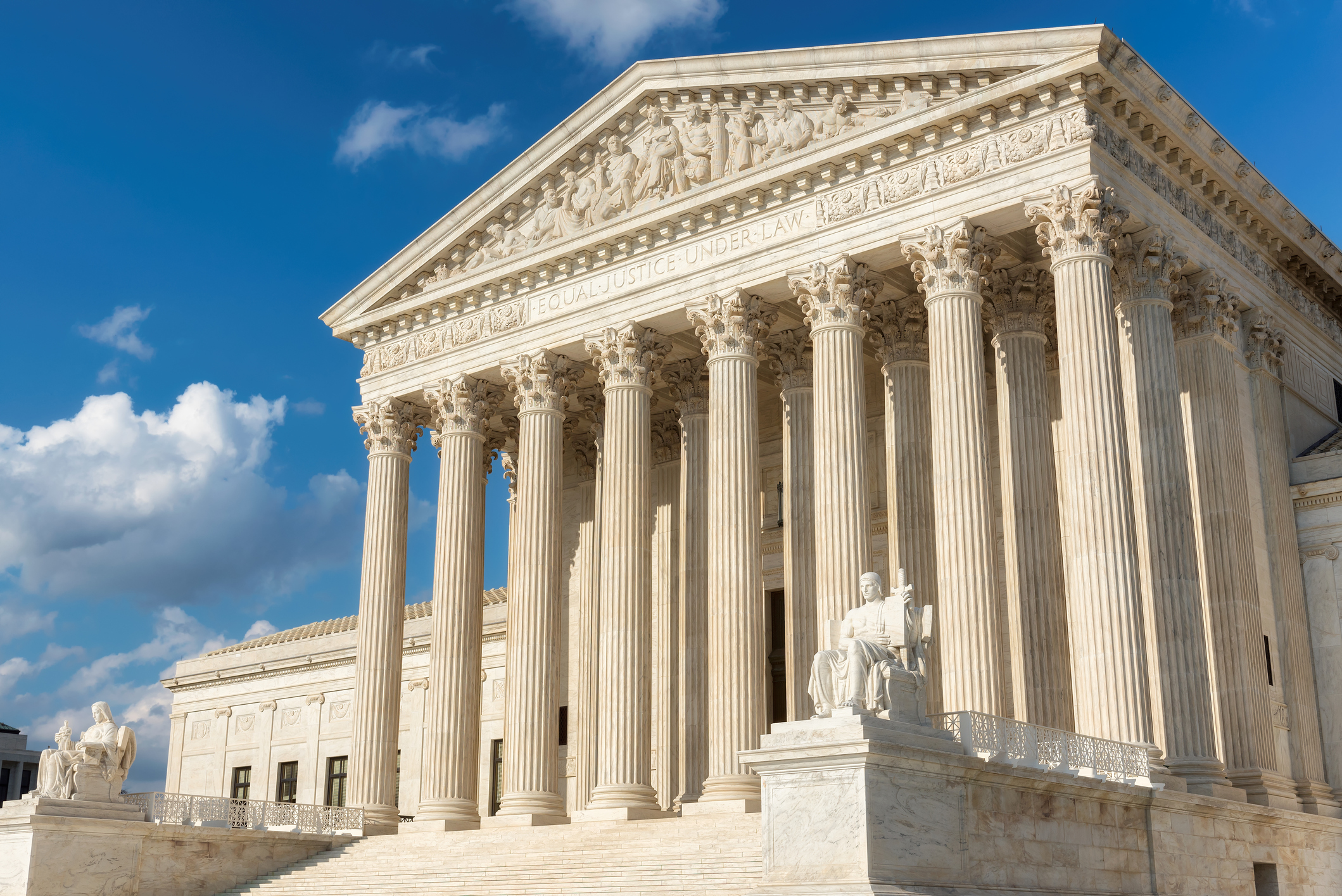
The Solicitor General says it is constitutionally relevant that one person heads the CFPB, but it is not.
The U.S. Supreme Court will soon hear argument on Seila Law v. CFPB, presenting a challenge to the constitutionality of the structure of the Consumer Financial Protection Bureau (CFPB). Seila Law argues that a provision in the CFPB’s governing statute that allows the President to remove the CFPB director only for “inefficiency, neglect of duty, or malfeasance in office”—also known as “for cause” removal—unconstitutionally restricts the President’s power to oversee the executive branch. The Solicitor General, Noel Francisco, has taken the unusual step of agreeing that this provision is unconstitutional.
The government’s arguments call into question the structure of many longstanding federal agencies such as the Federal Reserve. In provisions dating back over a century, Congress has chosen to grant the heads of certain agencies for-cause removal protection. The Supreme Court upheld for-cause removal protection in 1935, when it ruled that the structure of the Federal Trade Commission (FTC) was constitutional.
The Solicitor General nonetheless urges the Supreme Court to deem the CFPB to be categorically different than an agency like the FTC, and thus to deem this case not governed by that 1935 precedent. He argues that because the CFPB is run by a single director, it poses “heightened dangers” to the President’s control that multi-member boards and commissions do not, thereby drawing a constitutional line between multi-member agencies with for-cause removal protection like the FTC and single-member agencies with the same for-cause removal protection like the CFPB.
But no such neat line exists. The central premise of the Solicitor General’s argument is wrong. The extent of a President’s control over an agency’s actions varies from agency to agency, depending on many features of agency design. The distinction between single-member- and multi-member-led agencies ignores this reality; it rests on an inaccurate, overly simplistic, and ultimately incorrect view of the administrative state.
First, the Solicitor General emphasizes the President’s purported power to control the chairs of multi-member agencies and, through them, to control the agencies even if their members serve with for-cause protection from removal. According to the Solicitor General, the President has an “unfettered ability” both to appoint and to remove multi-member chairs.
In fact, multi-member agency chairs are appointed and removed in a variety of ways. For some, including the Federal Election Commission, the President has no role in appointing the chair: The chair is appointed by the members themselves. For others such as the Federal Reserve, the President appoints the chair but must secure Senate confirmation. And although many statutes provide the President with plenary power to remove a chair of a multi-member agency, at least one provides for-cause removal protection for the chair; others, are silent on the question and thus are open to differing interpretations. The President’s supposed “unfettered ability” in this area is a generalization not supported by the governing statutes.
Second, agency chairs, however they might be appointed or removed, do not have the extensive powers that would be necessary to control an agency. Most importantly, the chair roles tend to have largely administrative duties, like appointing and supervising staff (though not other commissioners) and approving certain expenditures, which do not extend to the agency’s substantive policy decisions, such as issuing regulations or adjudicating cases. For some agencies, the organic statute prescribes this administrative role. For many others—including the Federal Reserve—the statute is silent as to the chair’s precise role, but longstanding norms vest substantive authority in the body as a whole. Even statutes that empower the chair to make certain decisions, as is the case for the Commodity Futures Trading Commission, sometimes require approval from the rest of the commission. Because the powers of multi-member agencies’ chairs tend to be neither substantive nor absolute, the President’s choice of chair does not guarantee any meaningful control of an agency’s substantive actions.
Third, the Solicitor General argues that multi-member bodies like federal boards and commissions, by their very nature, produce a “frank and open exchange of views” and that, therefore, their decisions are less likely to diverge from the President’s preferences. Seila Law further claims that this deliberation leads to “less extreme outcomes.” In fact, significant social science research on group behavior shows the opposite: Deliberation in multi-member groups can lead to decisions that are more extreme than the those favored by group members before deliberation—a phenomenon called “group polarization.” The Solicitor General is asking the Supreme Court to pick one side, possibly the weaker side, of an ongoing academic debate, attach decisive constitutional significance to it, and open up significant portions of the administrative state to challenge on this basis.
Fourth, the Solicitor General overstates the influence a President can exert through appointments to multi-member agencies, contrasting it with the supposedly lesser influence a President can exert through appointing the CFPB director, who has a five-year term. Yet in stating that a President may have the chance over one term to appoint “at least some” members to a multi-member agency, the Solicitor General implicitly concedes that a President often does not have the opportunity to appoint a majority.
Consider, for example, the terms of the seven Federal Reserve governors, which are staggered by two years, so a one-term President can typically appoint only two of the seven. And the terms of multi-member heads of other agencies, such as the Consumer Product Safety Commission, are not staggered at all, so a President could theoretically have no appointments. The inevitable delays in Senate confirmation—and the fact that 30.5% of nominees to independent commissions from 1981 to 2014 failed—further illustrate the difficulty of achieving “control” of multi-member agencies. And although the Solicitor General claims that partisan-balance requirements support a new President’s ability to control a multi-member agency through appointments, in fact it may cut the other way. Even when a President gets to appoint members, they often must be of the opposing political party.
Indeed, the President may not always wield complete control over multi-member commissioners from his own party—even if he appointed them himself. For example, in September 2017, Secretary of Energy Rick Perry asked the multi-member Federal Energy Regulatory Commission (FERC) to bail out coal and nuclear sources as part of the Administration’s broader goal of bolstering the coal industry. By that time, President Trump had appointed four of the five FERC commissioners, and three were Republicans, including the chairman. Nonetheless, in January 2018, the FERC commissioners rejected the proposal unanimously. Despite having appointed a majority of the commissioners—all members of his own party, and all within the past year—the President did not get his way on an issue that was enormously significant to him.
Fifth, at times some multi-member agencies function in practice like the single-member agencies that the Solicitor General finds so suspect. Many lack quorum requirements and thus can operate—and have operated—with only one member. Regulations by both the Federal Deposit Insurance Corporation and Securities and Exchange Commissionprovide that even if only one member is in office, that member can control the agency. And this feature is not just theoretical. For example, the Surface Transportation Board, a multi-member agency regulating railroads, operated with a single member from April 2003 to May 2004. The FTC had only two commissioners from February 2017 until May 2018, and when one commissioner was recused, a single commissioner decided for the agency.
In the end, perhaps worse than simply being incorrect, the Solicitor General’s argument is dangerous. The features that the Solicitor General finds problematic in the CFPB are also present in the Federal Reserve. Most importantly, just as a President might not get to appoint the CFPB director, so, too, as indicated above, he might not get to appoint a majority of Federal Reserve members. And the powers of the Federal Reserve’s chair are limited, so the President’s ability to make that appointment, even assuming that the Senate consents, gives the President little influence over the agency. Furthermore, the Federal Reserve, like the CFPB, receives funding outside of the normal appropriations process—a feature that the Solicitor General also finds problematic. As a result, should the Solicitor General’s argument prevail in Seila Law, the negative impact on financial markets could be enormous.
The Solicitor General’s arguments call into question the constitutionality of multi-member agencies because the dividing line that he urges the Supreme Court to accept rests on illusory distinctions. The Court should not go down this precarious path. Instead, it should affirm its longstanding rule that for-cause removal protections are constitutional and rule that the CFPB’s for-cause provision is therefore constitutional as well.
Richard Revesz is the author of an amicus brief in Seila Law v. CFPB on behalf of scholars of the administrative state.




